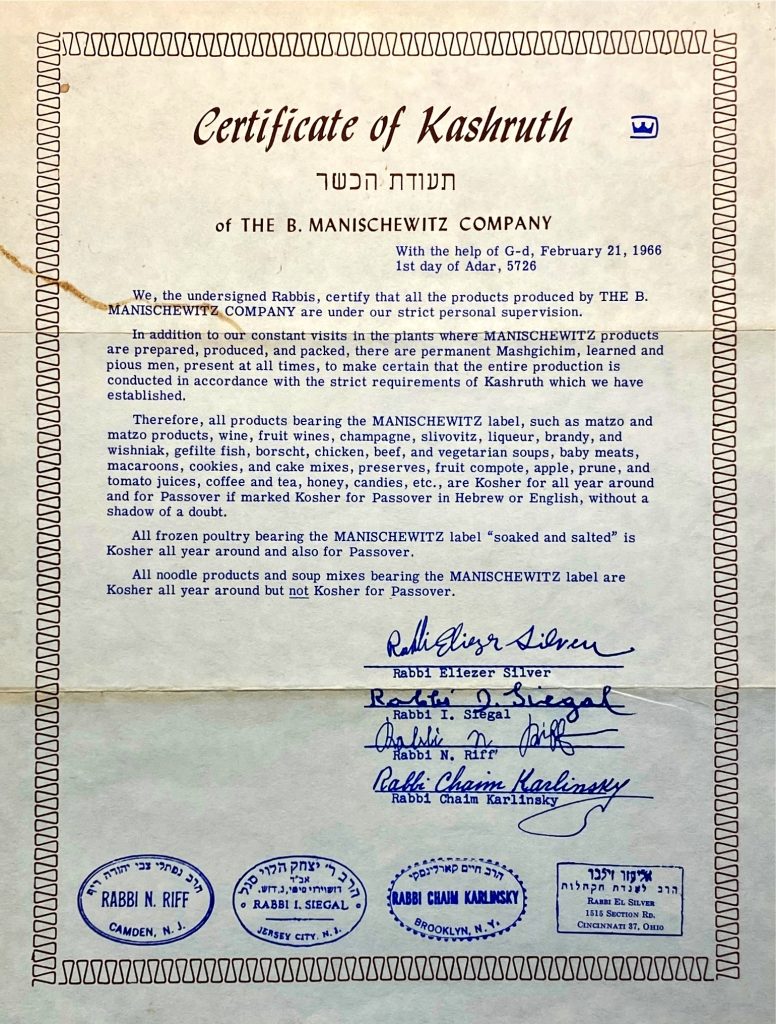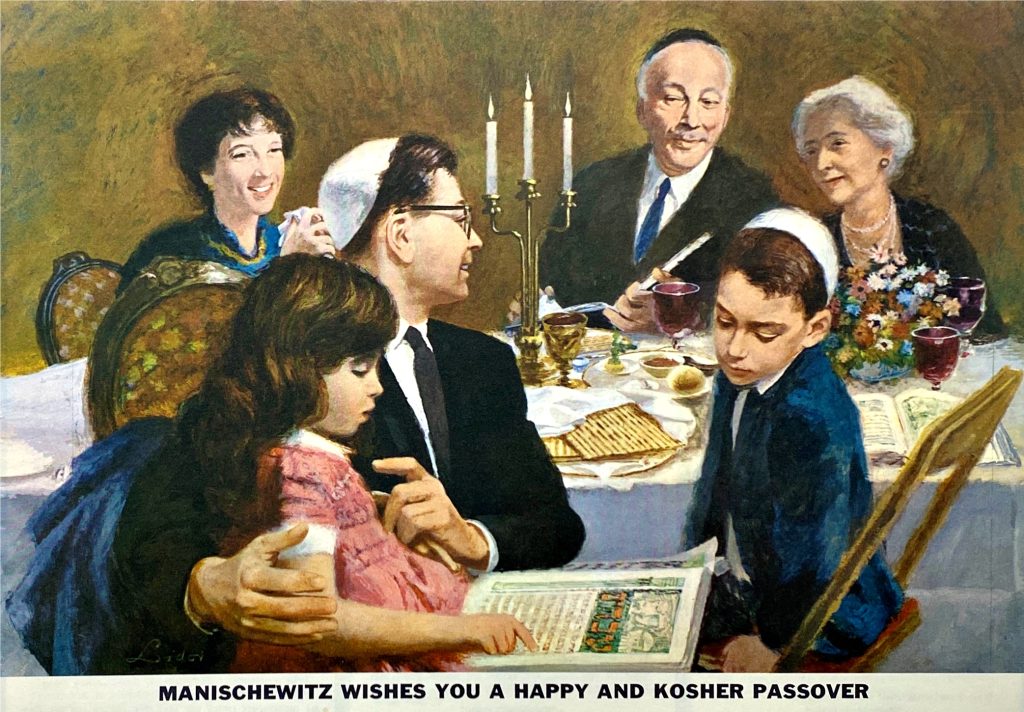By Ella Jordan-Smith
Reference Services Librarian, Center for Jewish History
Kosher Food Production in the United States and the Manischewitz Empire
The Jewish population in the U.S. currently makes up just under 2.5% of the total population, with an even lower percentage keeping kosher. Yet, over 40% of the packaged food produced in the U.S. is labeled as kosher, and American food production companies dominate the global kosher market. Many of the brands that we see on the shelves, such as Coca Cola, Kraft, and Nabisco, all produce kosher products. If such a small portion of the population eats strictly kosher, how has it become such a large industry?
When 23 Sephardic Jewish immigrants arrived in the U.S. and settled in what was then called New Amsterdam in 1654, they brought with them their traditions in kosher food. Soon after, they established Congregation Shearith Israel, which was the only place where kosher meat was processed and sold for many years. The vast increase in the Jewish population in America during the 19th and 20th century brought a higher demand for kosher butchers and food manufacturers. The increase in the kosher food market also spurred the need for more kosher certification agencies. In 1981, there were only 18 rabbis and agencies offering kosher certification services around the world; today there are over 1600, with 600 of those located in the U.S.

Kosher foods have been available in mainstream supermarkets for almost a century, but in the beginning it was only in certain cities and at certain times of the year. As early as the 1910s, supermarkets in Northeastern cities were setting up small kosher sections for Passover and the High Holidays. In the 1920s and 30s, Macy’s flagship store had a special section for Passover in their food department, which sold items such as Manischewitz matzo and kosher wine. The first supermarket to offer a permanent kosher department was a ShopRite in Lakewood, New Jersey in 1979. Now there are thousands of supermarkets with year-round kosher departments, many complete with their own bakeries, butchers, and fish markets.
One of the reasons that kosher production flourishes in the U.S. is because many people who buy kosher products are not Jewish. Kosher products provide certain guarantees that are useful for many other denominations and eating habits. Muslims will often buy kosher products when halal is not available, and Seventh Day Adventists, who are only allowed to eat biblically permitted animals, often buy kosher meats. Many consumers who are lactose intolerant or vegetarian will look for a kosher pareve certification, and people with gluten allergies will buy kosher for Passover items because they do not contain wheat.

Manischewitz is one of the leading brands of Kosher products in the U.S., best known for their matzo and wine. The company was founded in Cincinnati, Ohio in 1888 by Rabbi Dov Ber Manischewitz. As the business and the demand for kosher certified products grew, the company built a second production site in Jersey City, New Jersey, in 1932, to better serve the Jewish community in the New York metropolitan area. The B. Manischewitz Company Records are held by the American Jewish Historical Society at the Center for Jewish History. The collection contains an array of printed material and photographs, including product information and recipes for holiday meals, as well as copies of presentations given at a 1956 symposium on “Jewish Life as Reflected in Jewish Foods.”

Many of the products produced by Manishewitz are made for Jewish holidays. Manischewitz was one of the first kosher food companies to start producing food specifically for Passover, including a pre-packaged cake that was released in 1992 [see above]. The cake is pareve and does not contain flour.

Over the years, Manischewitz released many recipes and menus for the holidays, which all highlight a variety of Manischewitz products. This particular booklet [above] highlights recipes using Manischewitz’s brand of matzo meal, black pepper, peanut oil, condensed chicken soup, sponge cake mix, and instant coffee. They also published cookbooks over the years, such as Tempting Kosher Dishes: Prepared from World Famous Manischewitz’s and The Manischewitz Passover cookbook. These books included both traditional and contemporary recipes, while highlighting Manischewitz products.

The materials discussed in this post are currently on exhibit in the Lillian Goldman Reading Room at the Center for Jewish History through April 2023.
Additional Resources on Kosher food production in the U.S. at the Center for Jewish History:
Kosher USA : how Coke became kosher and other tales of modern food / Roger Horowitz
Related collections and materials at the Center for Jewish History:
Cohen Kosher Menu Collection AJHS I-602
Horowitz-Margareten family collection AJHS P-714
Kosher butchers voice YIVO 015008855a
Eat your way through America & Canada : a Kosher dining guide / by Oscar Israelowitz.
Directory of kosher hotels, boarding houses and restaurants in the U.S. .



Fascinating article, thank you.